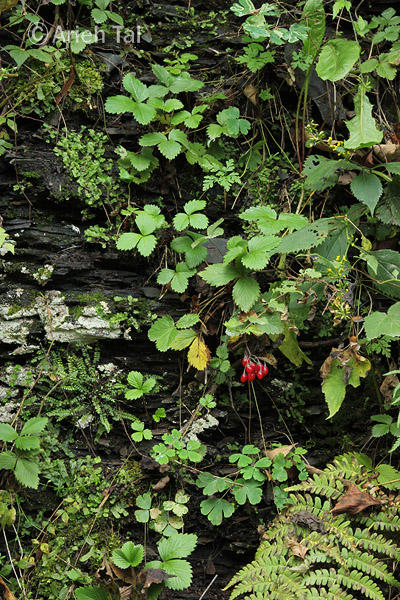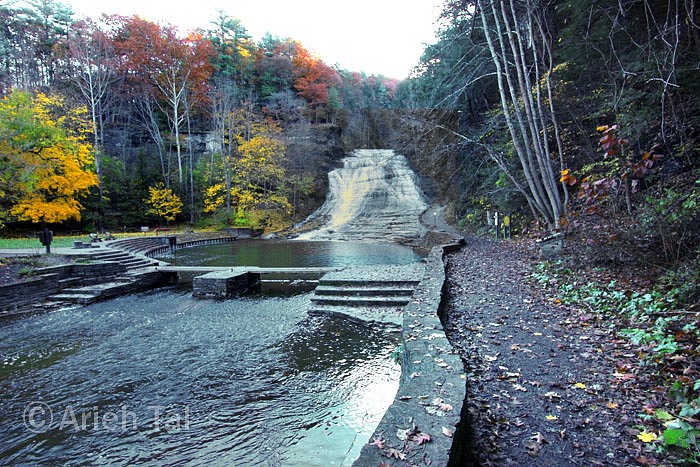| |
Direct
access to precipitation, as well as runoff from the slope, helps ensure
that the ground at the base of the cliff is fairly moist for much of the
year.
The area along the lowest portion of
the cliff supports lush vegetation, including shrubs, vines herbaceous
wildflowers and a few trees. Heavy pedestrian traffic helps
contribute to occasional introduction of non-native species.
Typical vascular plant species found
on these lower cliff faces include wild columbine, maidenhair spleenwort
fern, marginal woodfern, bulblet bladder fern, zigzag goldenrod,
blue-stem goldenrod, white wood aster, purple-flowered raspberry,
bush-honeysuckle, riverbank grape, common black raspberry, coltsfoot,
and virginia creeper.
Other vascular plant species found
along this sub-section of the gorge trail include witch hazel (a shrub),
eastern hemlock, white ash, red elderberry, spotted touch-me-not and
weeping forsythia. |

|
|
| |
To convert English plant names to
their scientific equivalents, click this
link. |
.
Figure B. Common vascular plants found growing on lower portion of
cliff at the Amphitheater sub-section of the gorge trail, including wild strawberry,
herb robert, wild columbine, zigzag goldenrod, bittersweet nightshade,
maidenshair spleenwort fern and marginal woodfern. October 2021 |
|

